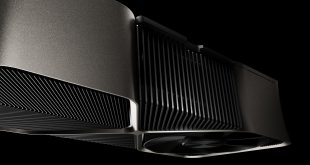At CES in January 2011, Jen Hsun gave a big speech about the fruits from Project Denver, the idea of nVidia working with another company to incorporate important CPU technologies that the graphics giant lacked in its portfolio.
Today, in San Francisco, AMD looks set to make a very similar announcement about its partnership. Is it the right move, how similar will the statements be and – if they are similar – why has it taken so long?
Intel's greatest challenge seems to be mind-set. It is so focused on making the most advanced processors that the world has ever seen, that when you ask for the most basic instruction set/die necessary in order to drive a phone or run a tablet – the design engineers look at you blankly.
That said, it's worth noting that Intel was nowhere in low-power computing for the laptop market – but the launch of Banias/Centrino/Atom/Core technologies etc managed to cement its number one spot almost overnight. So, we guess, you can't write them off.
AMD on the other hand has a bigger set of challenges. Namely, ‘How can you fight so many battles, on so many fronts, with so little resource?'
In that respect, it has decided that a little British ingenuity is a good thing and so, this afternoon UK time, an announcement will be made about how it will move forward on co-op ventures with ARM.
Here's a round up of things that could be announced/discussed/hinted at:-
- ARM is the fastest-growing CPU architecture in history and we're looking at the beginning of a new era where every device provides instant access to the Internet, using advanced processors and rich, new operating systems
. - We're looking to integrate our company's expertise with ARM's to create new products which will include full integration of our graphics technology into the same package
. - At the same time, we will be licensing ARM's future technologies in order to augment our own processors for new applications that will arise in the future
. - We're all going to have these advanced mobile devices in our lives and the number of these devices on the planet will move into the tens of billions – which becomes our key target market for the future
. - Embedded will be key for us, and you will see these products in everything from tablets to cars to kiosks
. - Energy efficiency is going to be key in the future – and that will be a key selling point for these technologies from our new venture
It could be that today's announcements won't use this language – or that a genuinely new path will be set for the collaboration between the 2 companies.
.
.

.
KitGuru says: There have been occasions over the years where AMD/ATi led, especially on graphics (DX9 and 11, for example), but they seem to be ‘at least level' with the number of times AMD has been the company doing the following. Notable examples include CrossFire following SLi and the ‘K' series processor naming strategy to match Intel's top end Core chips. Bill Gates famously said that by the time you see a band wagon, it's already too late to get on: Will that be the same for AMD and ARM? Can AMD start afresh with ARM and end up with something different from Tegra?
Comment below or in the KitGuru forums.
 KitGuru KitGuru.net – Tech News | Hardware News | Hardware Reviews | IOS | Mobile | Gaming | Graphics Cards
KitGuru KitGuru.net – Tech News | Hardware News | Hardware Reviews | IOS | Mobile | Gaming | Graphics Cards



Don’t AMD always just follow? Same with intel chips right?